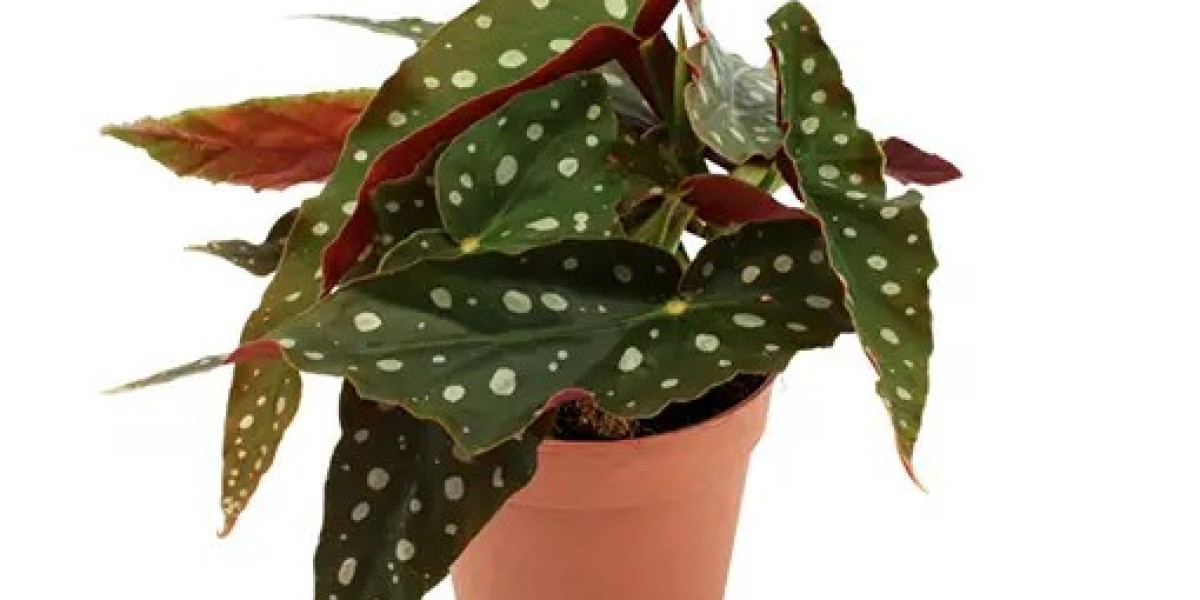When it comes to indoor gardening, the Begonia has emerged as a true gem for plant enthusiasts and interior decorators alike. With its unique polka-dot patterned leaves, elegant structure, and relatively low maintenance requirements, this begonia variety has taken the gardening world by storm. In this blog, we'll explore the captivating beauty and care tips of the Begonia Maculata, showing you why it's the perfect choice to elevate the aesthetics of your indoor garden.
Unveiling the Allure of Begonia Maculata
The Begonia Maculata, also known as the Polka Dot Begonia or the Trout Begonia, owes its charm to its distinct foliage. The leaves are a striking emerald green, adorned with contrasting white polka dots on their upper surface. The undersides of the leaves are a deep maroon, creating a delightful contrast that adds to its visual appeal. These characteristics make Begonia Maculata a conversation starter, drawing attention and admiration from anyone who encounters it.
Aesthetic Value: Elevating Your Indoor Space
Adding a Begonia Maculata to your indoor garden is akin to bringing a piece of natural artwork into your living space. Whether placed on a windowsill, a shelf or hanging gracefully in a decorative pot, this begonia variety exudes an aura of sophistication and elegance. Its unconventional pattern and colouration blend effortlessly with various interior design styles, making it a versatile choice for home decor.
Cultivation and Care Tips
While Begonia Maculata may appear to be a delicate beauty, it's surprisingly easy to care for, even for novice gardeners. Here are some essential tips to ensure your plant thrives:
Light: Begonia Maculata prefers bright, indirect light. Put it where it can get some filtered sunlight. The leaves will burn if exposed to direct sunlight.
Temperature and Humidity: This begonia variety thrives in moderate humidity levels and temperatures ranging from 65°F to 75°F (18°C to 24°C). Keep it away from drafts and sudden temperature fluctuations.
Watering: Don't water until the top inch of soil has dried off. It's better to underwater than overwater, as Begonia Maculata is susceptible to root rot. Water at the base of the plant to prevent water from accumulating on the leaves.
Soil: Well-draining, rich potting mix is essential for Begonia Maculata. Use peat moss, perlite, and pine bark to get the best results.
Fertilisation: During the growing season (spring and summer), feed your begonia with a balanced, water-soluble fertiliser every 4-6 weeks. Reduce or stop fertilisation in the dormant season (fall and winter).
Pruning: Regularly pinch off leggy growth and spent flowers to encourage bushier growth. This also allows the plant to direct its energy towards new growth.
Repotting: Repot your Begonia Maculata when it becomes root-bound, usually every 1-2 years. Repotting is best done in the spring when temperatures are milder.
Incorporating Begonia Maculata into Your Indoor Space
The versatility of Begonia Maculata allows you to get creative when adding it to your indoor garden:
Tabletop Elegance: Place a potted Begonia Maculata as a centrepiece on your dining or coffee table. Its unique leaves will surely be a conversation starter.
Hanging Beauty: Showcase its trailing nature by hanging the plant in a decorative macramé hanger. This adds visual interest at eye level and uses vertical space well.
Group Planting: Create a begonia-themed corner by grouping different Begonia varieties, including Begonia Maculata, for a stunning visual display.
Terrarium Drama: Incorporate Begonia Maculata into a terrarium setup, adding an enchanting touch to your miniature garden.
The Bottom Line
Incorporating a Begonia Maculata into your indoor garden is a decision that promises to enhance the visual appeal and ambience of your living space. Its distinctive polka-dot foliage and its manageable care requirements make it an excellent choice for both experienced plant enthusiasts and those new to gardening. Beyond its aesthetics, this begonia variety contributes to better air quality and provides a gratifying hobby that nurtures both the plant and the gardener.



